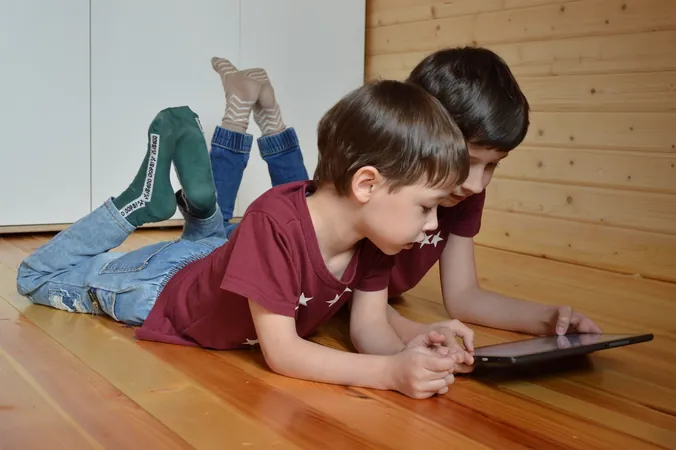
Shocking Link Discovered Between Social Media Habits and Substance Use in Pre-Teens
2024-11-16
Author: John Tan
Introduction
In an alarming new study, researchers have found that excessive social media use among pre-teens aged 11 to 12 is closely associated with early experimentation with substances such as alcohol, nicotine, and cannabis. As younger generations continue to spend more time glued to their screens, this critical research sheds light on the potential dangers lurking in the digital landscape.
Research Findings
Published in the journal Drug and Alcohol Dependence, the findings reveal a troubling trend: pre-teens who engage heavily in social media activities, including texting and video chatting, are significantly more likely to dabble in substance use just a year later. Interestingly, time spent on other screen-based activities like video gaming or watching TV does not seem to carry the same risks.
Expert Insights
Dr. Jason M. Nagata, the study’s lead author and an associate professor of pediatrics at the University of California, San Francisco, emphasizes the role of online social connections in this concerning relationship. "When pre-teens are repeatedly exposed to friends or influencers engaging in drinking or smoking behaviors on social platforms, they begin to normalize these actions, increasing the likelihood they will try such substances themselves," he explains.
The Role of Social Media
Moreover, social media is rife with representations of substance use that are often romanticized, with many platforms even utilizing these behaviors in their marketing campaigns for alcohol, tobacco, and cannabis products. This can be especially damaging to developing brains, as Dr. Nagata cautions that young teens have underdeveloped impulse control, making them particularly impressionable to this kind of content and advertising.
Call to Action
Addressing this issue requires action from schools and parents alike. Co-author Dr. Kyle T. Ganson from the University of Toronto suggests implementing media literacy programs in schools to educate students on the influence of digital content related to harmful behaviors. "Parents also play a crucial role by supervising the content their teens access and establishing firm guidelines around screen time," he advises.
Conclusion
The study builds upon existing literature concerning adolescent substance use, linking it to negative outcomes like lower academic performance and heightened risk of developing addiction disorders later in life. Utilizing data from the Adolescent Brain Cognitive Development (ABCD) study—one of the largest long-term investigations into brain development in the U.S.—the research analyzes habits reported by 8,006 early adolescents regarding their screen time and experimentation with substances.
"This groundbreaking study highlights the urgent need to comprehend how digital interactions are shaping teen behavior," concludes Nagata. As we move forward, further research is essential to unlock deeper insights into these connections and to devise effective interventions.
Final Thoughts
If you think pre-teens are immune to these trends, think again. The alarming correlation between excessive screen time and early substance use could have serious ramifications—it's time for parents, educators, and communities to take a stand!



 Brasil (PT)
Brasil (PT)
 Canada (EN)
Canada (EN)
 Chile (ES)
Chile (ES)
 España (ES)
España (ES)
 France (FR)
France (FR)
 Hong Kong (EN)
Hong Kong (EN)
 Italia (IT)
Italia (IT)
 日本 (JA)
日本 (JA)
 Magyarország (HU)
Magyarország (HU)
 Norge (NO)
Norge (NO)
 Polska (PL)
Polska (PL)
 Schweiz (DE)
Schweiz (DE)
 Singapore (EN)
Singapore (EN)
 Sverige (SV)
Sverige (SV)
 Suomi (FI)
Suomi (FI)
 Türkiye (TR)
Türkiye (TR)